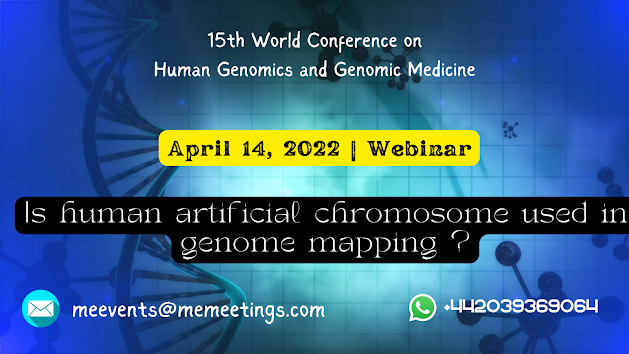Is human artificial chromosome used in genome mapping ?
Artificial chromosomes are DNA molecules
with a known structure that are manufactured in vitro from specified
ingredients that exhibit natural chromosome-like features. Artificial
chromosomes were initially developed in budding yeast and have already been
used in a large variety of yeast genetics applications. Vectors based on the
human artificial chromosome (HAC) provide a potential technology for
transferring and producing full-length human genes of any size. Bacteriophage
constraints such as restricted cloning capacity, lack of copy number control,
and insertional mutagenesis induced by integration into host chromosomes are
all addressed by HACs.
Transgene silencing has been linked to the random integration of
traditional gene delivery vectors like as viruses, plasmids, P1 phage-derived
artificial chromosomes, bacterial artificial chromosomes, and yeast artificial
chromosomes. Additionally, integrated viral sequences can cause cancer by
activating oncogenes at the insertion site. Various human artificial
chromosomes (HACs) have several potential characteristics for an ideal gene
delivery vector, including extra chromosomal stability and the ability to carry
large genomic loci with their regulatory regions, allowing physiological
regulation of the tried to introduce gene in a manner similar to native
chromosomes.
For genome mapping, the PAC cloning system is a
powerful tool. The techniques given here have been shown to be effective for
generating PAC libraries from lower (as well as higher vertebrate) species
and cloning PAC clones quickly (restriction
mapping). The PAC cloning system should be effective in solving a variety of
genomics problems that are specific to lower vertebrates and other
non-mammalian animals. Artificial chromosomes are chromosomes containing the
traits of centromeres, telomeres, and replication origins, as well as the
sequences required for their stable maintenance as autonomous, self-replicating
chromosomes within the cell. The transgenic does not required to be integrated
into the host DNA because of these features. The SCNT method involves
transferring artificial chromosomes into a human host and then cloning animals.
The transfer of human antibody genes of 10 Mb in size with human artificial
chromosome to cattle showed that this technology works, because the
transplanted chromosome was stable and the antibody genes expressed to a degree
in the transgenic animal.



Comments
Post a Comment